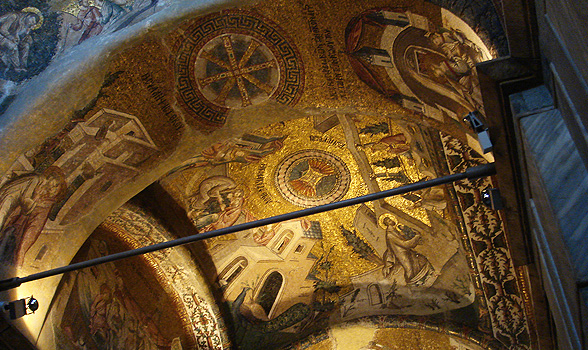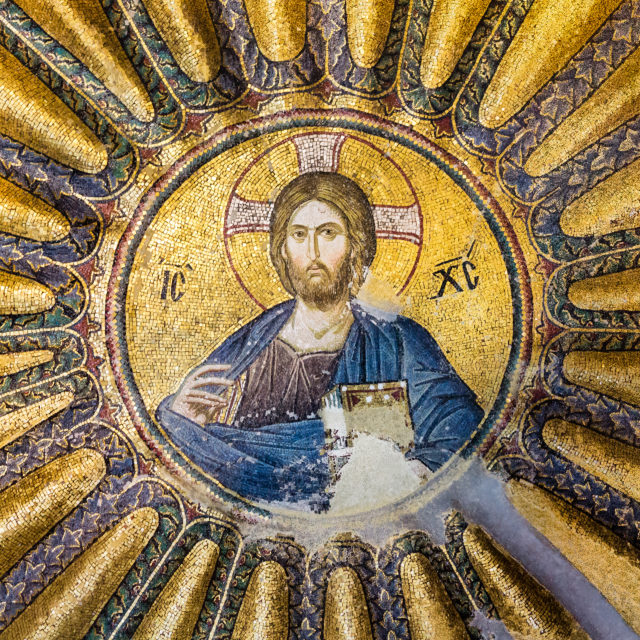St. Savior in Chora (Kariye Müzesi; formerly the Kariye Camii)
Much of what remained in the coffers of the Byzantine Empire was invested in the embellishment of this church, one of the finest preserved galleries of Byzantine mosaics as well as a detailed account of early Christian history. The original church was built in the 4th century as part of a monastery complex outside the city walls (chora zonton means “in the country” in Greek), but the present structure dates to the 11th century. The interior restoration and decoration were the result of the patronage of Theodore Metochites, Grand Logothete of the Treasury during the reign of Andronicus II Paleologos, and date to the first quarter of the 14th century. His benevolence is depicted in a dedicatory panel in the inner narthex over the door to the nave, which shows Metokhites presenting the Chora to Jesus.

When the church was converted into a mosque in the 16th century, the mosaics were plastered over. A 19th-century architect uncovered the mosaics but was ordered by the government to re-cover those in the section of the prayer hall. American archaeologists Whittemore and Underwood finally uncovered these masterpieces during World War II, and although the Chora became a museum in 1947, it is still often referred to as the Kariye Camii.
In total there are about 50 mosaic panels, but because some of them are only partially discernible, there seems to be disagreement on the exact count. Beginning in the exonarthex, the subjects of the mosaic panels fall into one of four themes, presented more or less in chronological order after the New Testament. Broadly, the themes relate to the cycle of the life of Christ and his miracles, stories of the life of Mary, scenes from the infancy of Christ, and stories of Christ’s ministry. The panels not included in these themes are the devotional panels in the exonarthex and the narthex, and the three panels in the nave: The Dormition of the Virgin, Christ, and the Virgin Hodegetria.
The Paracclesion (burial section) is decorated with a series of masterful frescos completed sometime after the completion of the mosaics and were presumably executed by the same artist. The frescoes reflect the purpose of the burial chamber with scenes of Heaven and Hell, the Resurrection and the Life, and a stirring Last Judgment with a scroll representing infinity above a River of Fire, and a detail of Jesus saving Adam and Eve’s souls from the devil.
Frommer’s Turkey 4th Edition


